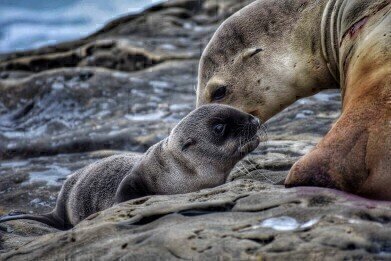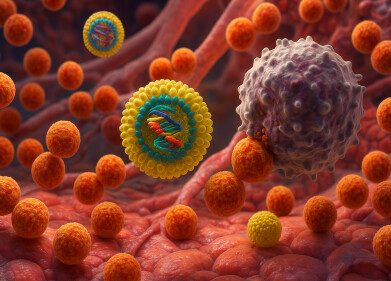News
Are New Species Still Born?
May 29 2015
It has been long established that species evolve slowly over time in order to survive and flourish. But scientists are discovering new species all the time, so can new species be born without actually evolving?
Let’s examine what is a species and what we mean by species evolution.
What is a species?
A species consists of any group of plants or animals that share similar characteristics. This may include wings, fur, sharp incisors, scales, gills, tails, four legs and so on.
Many ways that scientists decide whether a group of animals or plants are the same species is to work out whether they can mate with each other. If they cannot then they belong to different groups.
How do species evolve?
All species are unique and different and it is these differences that can mean survival or extinction.
Evolution is the small changes in genetic make-up that happen over millions of years. These genetic mutations can be beneficial to the organism and so are passed onto the next generation. Mutations that are a disadvantage are not passed on and therefore die out.
These small mutations are most commonly recognised as the typical cause for evolution, however, there is now evidence of single-gene duplications (or whole genome) which are responsible for bigger mutations.
What are single-gene duplications?
Scientists have always struggled to understand how a simple one-celled bacterium could give rise to a complicated human being. The theory of evolution does not satisfy the many questions that this raises.
A single-gene duplication occurs when a mutation causes the production of a duplicate of the original gene, so we now have two genes. In this duplicate, one copy of the gene mutates and evolves to perform a different function, whilst the other copy carries on performing the gene’s original function.
As regards to evolution, small mutations such as changes in beak size or moth colours are said to affect whole groups of animals and plants. However, it is the single-gene duplications that are now thought to be responsible for the creating new species.
Examples of new species in 2014
Over 18,000 new species were discovered in 2014, amongst them a cartwheeling spider and a dinosaur dubbed the ‘chicken from hell’.
Here are a few of our favourites:
- Scientists spent twenty years studying sand circles at the bottom of the ocean near Japan that measured up to 2 metres wide. They belonged to a new species of male white-spotted pufferfish. The male keep his mate’s eggs safe by building the ridges to protect them from turbulence.
- A frog with fangs was discovered, however, this was not a new species because of the fangs, this frog gave birth to live tadpoles. Typically frogs release frogspawn, but a few frogs will produce eggs or tiny froglets. This one was spotted giving birth to tadpoles in Indonesia.
- Finally, a new plant has been found in the Philippines that does not use photosynthesis to grow, and therefore has no chlorophyll. The plant is described as a root parasite, and draws its nutrition from other plants.
To read about recent discoveries in species evolution, read our article: Introducing the Sichuan Bush Warbler – A New Species of Bird.
Digital Edition
Lab Asia Dec 2025
December 2025
Chromatography Articles- Cutting-edge sample preparation tools help laboratories to stay ahead of the curveMass Spectrometry & Spectroscopy Articles- Unlocking the complexity of metabolomics: Pushi...
View all digital editions
Events
Jan 21 2026 Tokyo, Japan
Jan 28 2026 Tokyo, Japan
Jan 29 2026 New Delhi, India
Feb 07 2026 Boston, MA, USA
Asia Pharma Expo/Asia Lab Expo
Feb 12 2026 Dhaka, Bangladesh



















